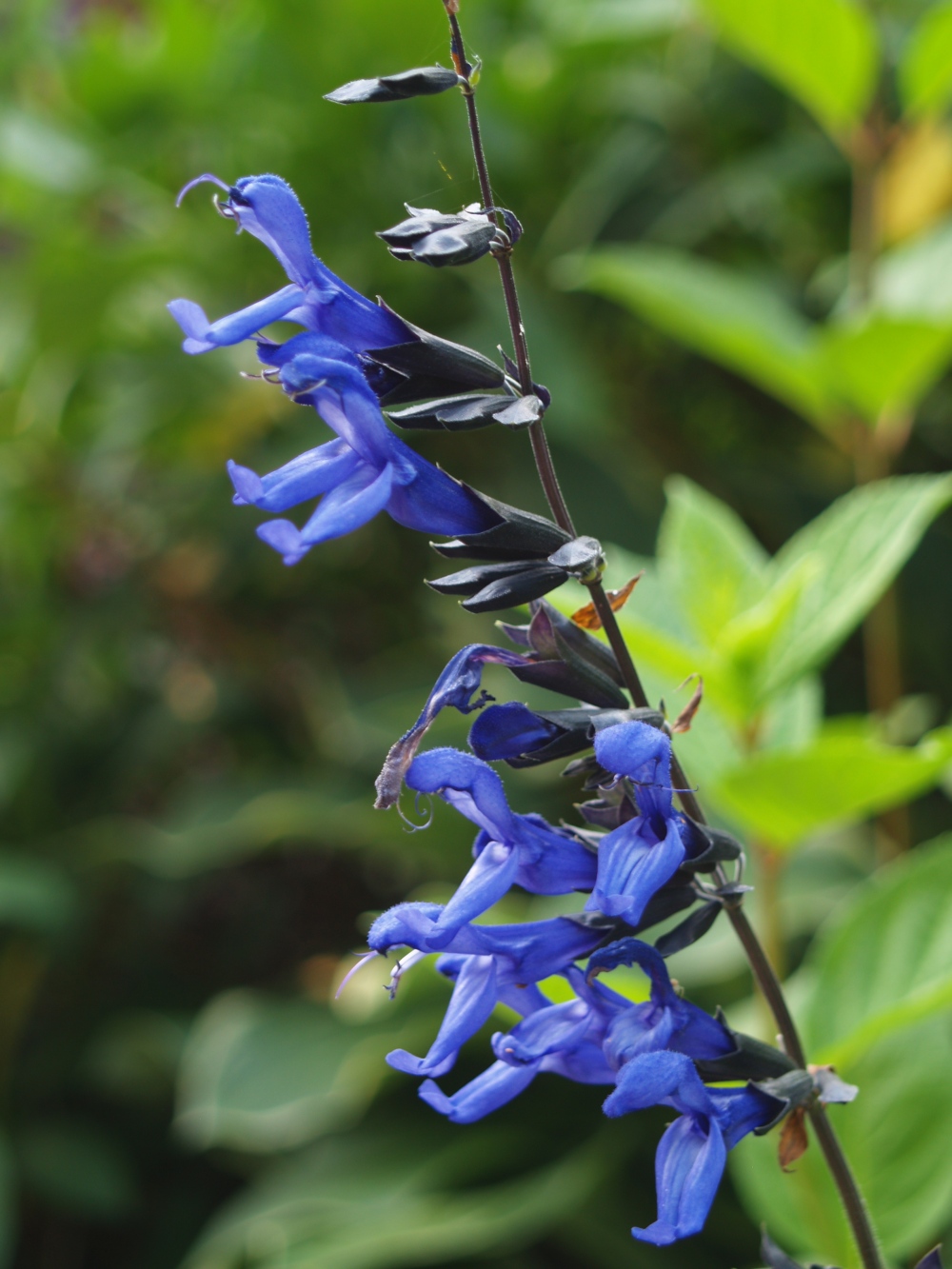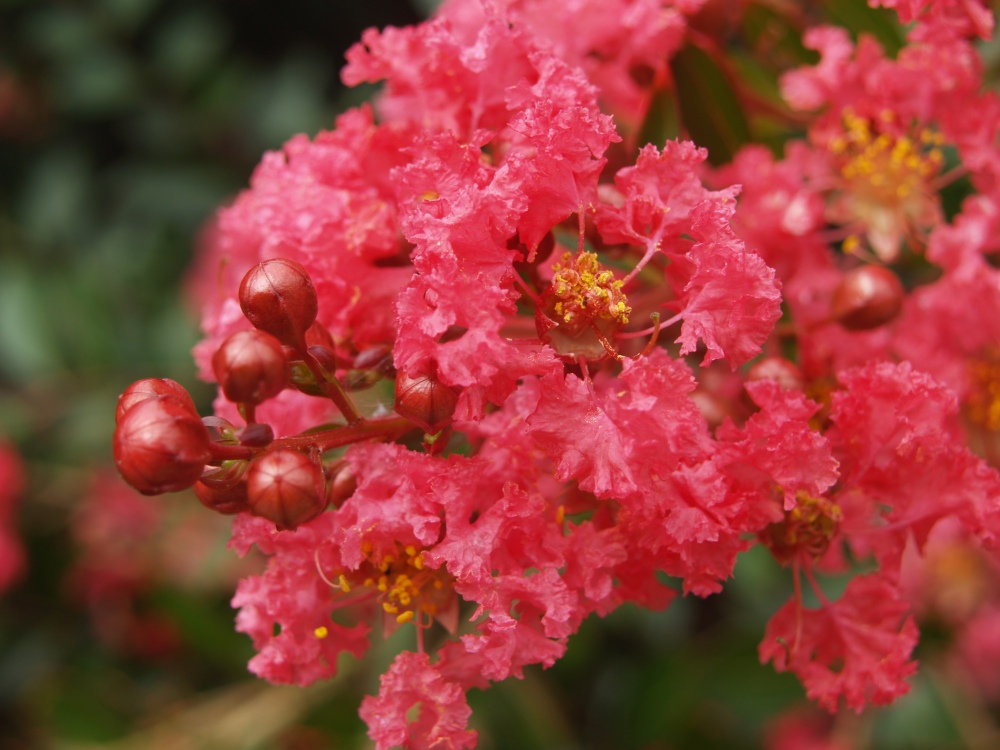Paperbush (Edgeworthia chrysanthus, below) seems to be well known among longtime gardeners in the southeast, though few seem to actually grow one in their own gardens. A handful of years ago, I hadn’t seen one in southern gardens, or in ones closer to my northwestern Virginia garden, but I was intrigued when I first read about paperbush and subsequently saw photographs of its exquisite late winter blooms. I researched a source and determined that it was at least marginally cold hardy, so I purchased five small shrubs several years back.
References were divided as to paperbush’s cold hardiness and ultimate size, but most claimed it would grow to a four by four foot mound, so I planted the five with this in mind and kept neighboring plants at an appropriate distance. Now, this is a bit unusual for me, I’ll admit. I’ve been know to regularly cram plants into spaces far too small with varying degrees of success. Sometimes it’s almost immediately obvious that one plant or the other must be moved, and other times I ignore the signs and leave the neighboring plants to fend for themselves. That all seems to work out for the best is more a testament to the forgiveness of plants than it is to my judgment.
But, the paperbushes were planted in the relatively open spaces surrounding the newly constructed koi pond in the rear garden, so there was little reason at the time to plant too closely. After two growing seasons the paperbushes were growing vigorously, and one was dug out and given to an enthusiastic co-worker who was developing his own rear garden. By the third spring the shrubs were nearing the mature dimensons promised by the references, and a few years later the shrubs are nearly six feet tall and more than twelve feet across.
And now, here is the problem. For the past few summers, it’s been clear that the ‘Black and Blue’ salvia (Salvia guaranitica ‘Black and Blue’, above) that grows at the edge of the pond and a stone patio is endangered by the paperbush’s spread. Other perennials and smaller shrubs have been overwhelmed by the three other paperbushes, but I treasure the salvia’s blooms each summer, and I’ve followed its efforts to peek out from between the dense foliage of the shrub. Some selective pruning has helped, and again this spring I surmised that I could put off transplanting the salvia for another year by removing a branch or two, though the semi woody stems now arched a few feet from the plant’s base.
‘Black and Blue’ saliva is not dependably cold hardy in my garden, but with warm recent winters it has gotten established, and often a plant with a three year root system will prove to be more cold hardy than expected. Partially for this reason, I was reluctant to transplant it, and unfortunately, after a month or so when I didn’t pay much attention, it’s gone. Not completely. It’s still there if I lift several of the paperbush’s branches, but there’s no way that the salvia has the strength to reach further for sunlight, so this could be the end. I’m evaluating my options, but the access under the paperbush to dig a proper root system is nearly impossible without mangling the shrub and the salvia.
There is a similar circumstance only a few paces away along the patio’s edge. A ‘Cherry Dazzle’ dwarf crapemyrtle (Lagerstroemia ‘Gamad I’, above) has grown to its full size in only a few years, and now a clump of ‘Sparkling Burgundy’ pineapple lily (Eucomis comosa ‘Sparkling Burgundy’, below) and a variegated Blue Mist shrub are threatened. Oh yes, in addition to the crapemyrtle there are two hydrangeas, the white flowered mophead ‘Blushing Bride’ (Hydrangea macrophylla ‘Blushing Bride’, a disappointment) and a wide spreading Oakleaf hydrangea (Hydrangea quercifolia). Though the Oakleaf hydrangea was planted more than five years ago, this spring it and the other Oakleafs in the garden decided that the spring weather was perfect for them to grow far in excess of past years, so I’ve been madly chopping branches to save this lovely conglomeration.
I’ve divided ‘Sparkling Burgundy’ a few times over the years as the clump thickened, and the remaining bulbs could be rather easily moved at season’s end, but I prefer to keep this combination as is for a while longer. At some point, likely to be sooner than later, shrubs that are determined to continue growing far past the mature size that references state will get the best of me, and like the poor salvia, the pineapple lily and Blue Mist shrub will be lost.
The last photo is great! I love the look of those 4 plants combined. It’s too bad some of them will be crowded out eventually.
Wonderful collection!
What you’ve so eloquently described is a situation I’m dealing with as well. The time for selective pruning in my ranchero garden has come and gone. Drastic measures need to be taken and this fall I will be uprooting and transplanting several cacti and agave that have overtaken the flowering plants I can’t bear to lose! I think of the situation as garden rebuilding!
Your pictures and accompanying text are so damn fantastic. I absolutely LOVE everything about your blog!
My definition of drastic action is anything that involves coming in close contact with the sharp spines of agaves or cacti. I have a collection of agaves that I move in and out of the house, and when they come indoors for the winter the first day my wife cuts off the spines. Two agaves are in large containers and if there’s space I sink them into the ground for the summer, but they must be given a wide berth so that I’m not impaled by the long spines.
LOL your wife sounds like my mother! Whenever she comes over she reminds me how “lethal those things are.”
I tell her to think of it as my home security system! hahahaha
Reblogged this on Beatz kane Blog.
I’ve found the Salvia ‘Black and Blue’ to come back for me in NJ as well. The trick is to plant it in the spring several inches lower than one normally would. Good luck with your space considerations.